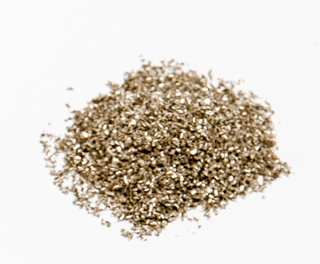We have received several questions regarding the best approach to cleaning solid samples and standards that have been prepared as chips for analysis by a total dissolution technique, such as ICP-OES or ICP-MS. Let’s first discuss common approaches for sampling, and then appropriate methodologies for ensuring chips are clean and free from contamination.
A simple, relatively inexpensive approach is to drill samples using a W carbide or Co drill bit. This works well for irons, low alloys and some hardened steels. Care must be used when drilling as these bits are very brittle and prone to accidental damage. Once an appropriate size sample has been produced, typically 0.5-1.0g in duplicate, residual contamination from the drill bit must be removed, as described below.

A more sophisticated approach involves using larger, more expensive machinery such as saws or lathes, and more recently, lasers. These techniques work best for high temperature or hardened alloys that are not easily drilled. As an example, a slab and trim saw, equipped with a diamond blade or Al2O3 blade, can be used to slice a piece of sample which then can be clipped into smaller pieces.
Regardless of how the solid sample has been cut or chipped, there will be residual contamination from the process. The best way to clean chips or turnings is to lightly pre-etch them in the acid mixture appropriate for dissolution of that particular alloy. This pre-etch step can be performed at room temperature or accelerated with some heat. NOTE: If HF is contained in the acid mixture, Nalgene or Teflon beakers and lids must be utilized in order to prevent low level contamination from glassware. Once the sample has been pre-etched (typically removing roughly 10% of the sample mass), it can be rinsed in deionized water, followed by an alcohol or acetone rinse, and then air-dried. This will remove all contamination, dirt, oil, grease, and water from the chips and provide a homogeneous, clean sample for digestion. These techniques work best for high temperature or hardened alloys that are not easily drilled.
Appropriate digestion techniques for different alloys can be found in previous blogs. ASTM also has procedures for the analysis of Ni alloys by ICP-OES and ICP-MS that can be referenced for more information on standards prep and calibration, ASTM E2594 and ASTM E2823, respectively.


